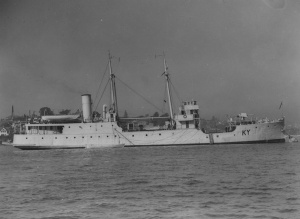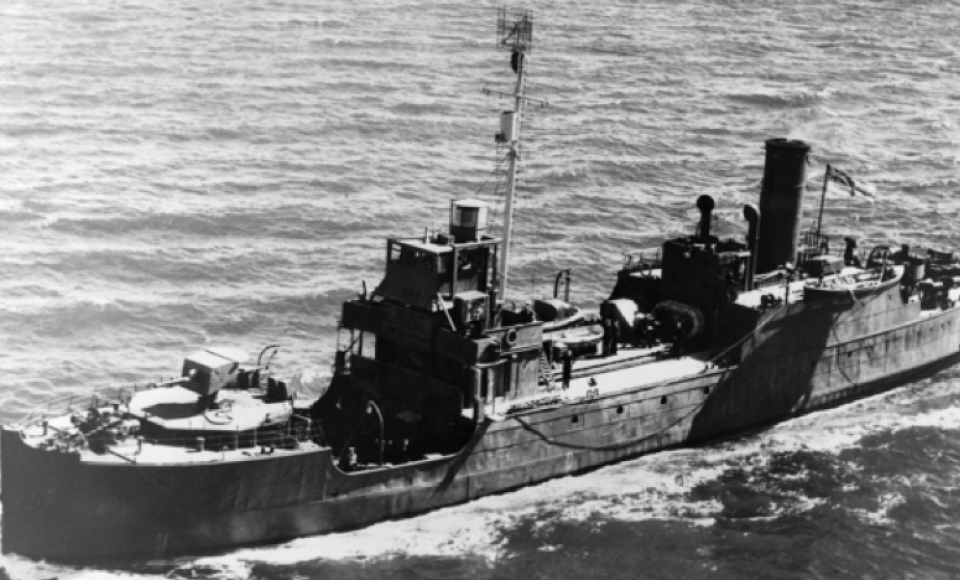MV Kybra was a single screw passenger and cargo motor vessel built for the Government of Western Australia by the Coastal Construction Company of Montrose, Scotland. It was requisition for naval service on 8 July 1940. That day, after discharging a cargo at Esperance, Western Australia, it sailed for Sydney to be fitted out as an auxiliary anti-submarine vessel. It arrived in Sydney on 16 July.
It was commissioned HMAS Kybra on 30 September 1940 as a tender to the anti-submarine training establishment, HMAS Rushcutter, under the command of Lieutenant Commander Basil T Brewster DSC RN. Over the next 5 years it served in eastern Australian waters mainly off the New South Wales coast but as far north as Townsville and as far south as Devonport.
In June 1942, with the institution of the convoy system, Kybra began operations as an escort vessel out of Sydney. In March the following year, it was attached as a seagoing radar training ship to the Royal Australian Navy radar school located at South Head, later named HMAS Watson. It was later relieved in this capacity by HMAS Yandra. On 12 May 1943 it escorted SS Ormiston, damaged after being torpedoed by a Japanese submarine, back into Sydney.
Specifications
 |
| Type |
Anti-submarine and RDF Training Vessel |
|---|---|
| Builder |
Coastal Construction Company Ltd, Montrose, Scotland |
| Launched |
13 January 1926 |
| Commissioned |
30 September 1940 |
| Decommissioned |
23 November 1945 |
| Dimensions & Displacement | |
| Displacement |
|
| Length | 204 feet 2 inches |
| Beam | 31 feet 1 inch |
| Draught | 11 feet 10 inches |
| Performance | |
| Speed | 10.5 knots |
| Complement | |
| Crew | 55 |
| Propulsion | |
| Machinery | 6-cylinder oil engine, single screw, 233 NHP |
| Armament | |
| Guns |
|
| Other Armament | 2 depth charge throwers |
| Awards | |
| Battle Honours | PACIFIC 1941-45 |
